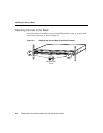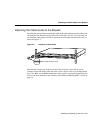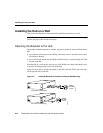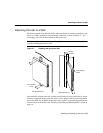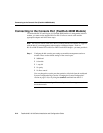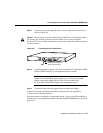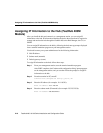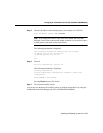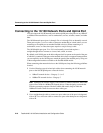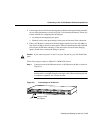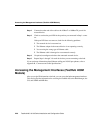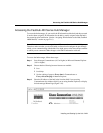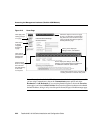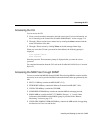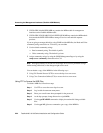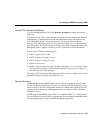
Connecting to the 10/100 Network Ports and Uplink Port
FastHub 400 10/100 Series Installation and Configuration Guide
2-18
Connecting to the 10/100 Network Ports and Uplink Port
You can connect the 10/100 network ports and the uplink port to the ports on any 10BaseT
or 100BaseTX network device, such as workstations, servers, switches, routers, and other
hubs.
The 10/100 network ports (ports 1x through 12x or 1x through 24x) are internally crossed.
These ports require a crossover cable to connect to another hub or switch (unless you are
connecting to the uplink port on another FastHub or device). When connecting to a
workstation, server, or router, these ports require a straight-through cable.
The 10/100 uplink port (port 12 or 24) is not internally crossed and requires a
straight-through cable to connect to a server, hub, switch, or router.
By default, each 10/100 port on the hub configures itself to operate at the speed of the port
to which it is connected. If the port on the attached device does not support autonegotiation,
you can explicitly set the 10/100 port to match the speed of the attached port by using one
of the management interfaces available to the FastHub 400M models.
When connecting other network devices to the 10/100 ports, keep the following guidelines
in mind:
• Use the following types of twisted-pair cables when connecting the 10/100 network
ports or the 10/100 uplink port to a network device:
— 10BaseT network devices—Category 3, 4, or 5
— 100BaseTX network devices—Category 5
Note Although you canuse Category 3 and4 cables for 10BaseT networks, these cable
types will not work for 100BaseTX network devices. When designing a network that
includes autosensing repeaters like the FastHub 400 models, keep in mind that
100BaseTX traffic cannot be sent over these cable types.
• Use a straight-through cable to connect two ports when one of the ports is designated
with an X. Use a crossover cable to connect two ports when both ports are designated
with an X.



